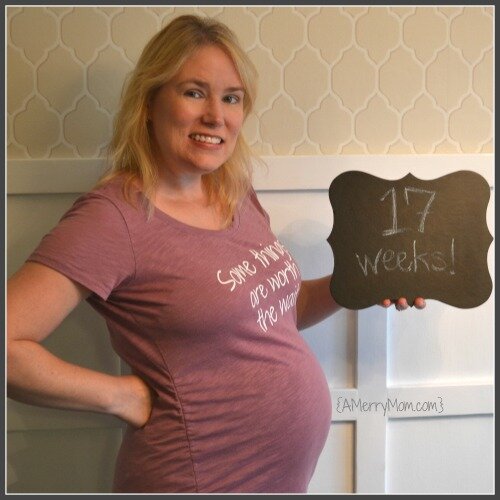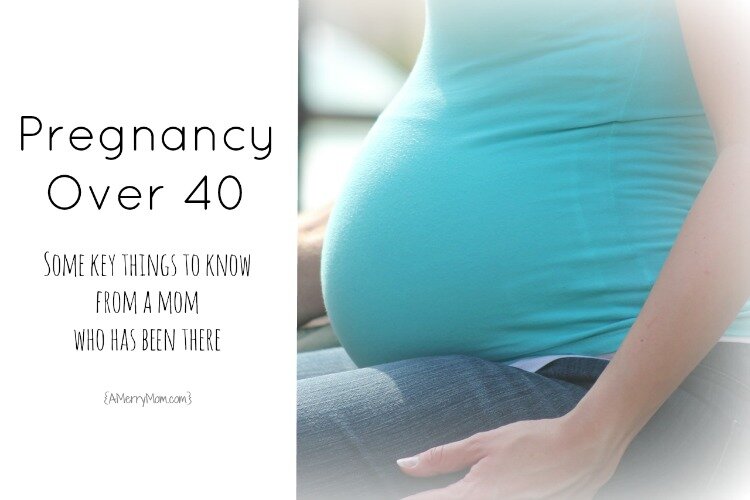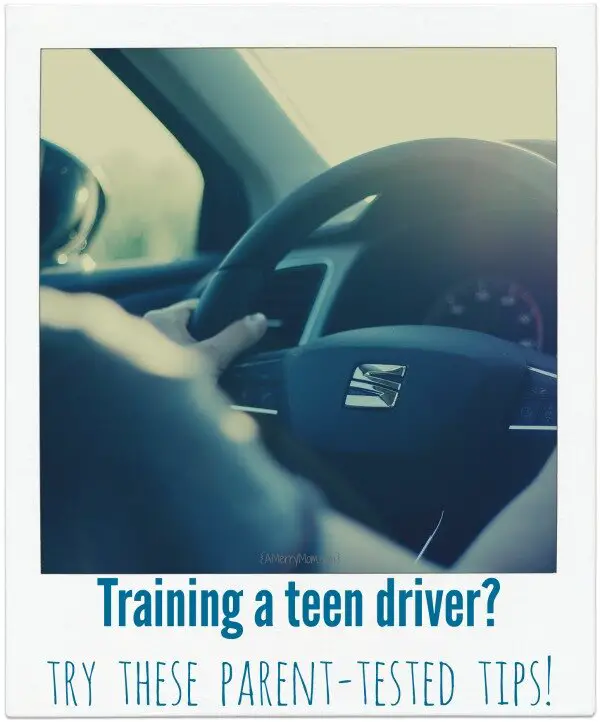Surprise! Baby #4 is coming!
 To say that this has been a surprise pregnancy doesn’t really convey the initial shock I felt. I mean, it’s been almost 12 years since our third child was born, and I’m over 40 now. This new baby was completely unexpected for us. And it surprised everyone we know when they found out we were expecting baby #4!
To say that this has been a surprise pregnancy doesn’t really convey the initial shock I felt. I mean, it’s been almost 12 years since our third child was born, and I’m over 40 now. This new baby was completely unexpected for us. And it surprised everyone we know when they found out we were expecting baby #4!
It took 3 home pregnancy tests and an ultrasound at the doctor’s office to make my brain understand this was really happening. For a while, I sorta lived in a state of shock compounded by round-the-clock “morning” sickness.
All that nausea was an added surprise. I previously had two very easy pregnancies followed by one with just a few twinges of nausea here and there. I was not prepared for the overwhelming nausea this time around. When I got to the 11-week mark, I thought with great hope that the sick feeling would soon subside. Instead, I found that it actually got worse for a few weeks. Finally, around 14 weeks, I started feeling better.
During that first trimester, my heart soared with joy over a new baby to cherish, while my head pestered me with all the scary statistics about the increased chance of miscarriage and birth defects for a pregnancy over age 40.
I was happy to learn about the new noninvasive prenatal testing that is available now (since it wasn’t around for my previous pregnancies). I was even happier to get the results saying I was at low risk for several genetic disorders (since I previously qualified as high risk simply due to age).
Now, in my second trimester, my head has added some new worries. For example, why do I look so huge already? And how big does that mean I’m going to get by the end?
But overall I’m loving the joy and excitement of preparing to welcome a new member of our family.
So is everyone else, by the way. All of my early fear that my kids, family members, and friends would think it was weird to have a baby at my age has been replaced by so much support and enthusiasm from everyone we know.
What I’ve learned about pregnancy over age 40

-
Healthy babies are the norm for pregnancy over age 40.
If you research pregnancy over age 40, you find some scary-sounding statistics about things like miscarriage, stillbirth, and birth defects. It can freak you out. But you have to keep it all in perspective. I like this helpful post on MayoClinic.org that points out, “the risks of pregnancy after 35 might not be as bad as they seem. For congenital anomalies, for example, it might be the difference between a 3.5 percent risk and a 5 percent risk. This would translate to a 95 percent chance of delivering a healthy baby.”
The post continues to say: “it’s important to keep your perspective. According to the American College of Obstetricians and Gynecologists, the risk of stillbirth for all pregnancies is less than 1 percent. For women ages 35 to 39, it’s 1.1 to 1.4 percent. For women age 40 and older, it’s 1.1 to 2.1 percent. Even with a higher rate of stillbirth, the odds of delivering a healthy baby are still strongly in your favor.” (My emphasis.)
This type of perspective is important to keep in mind when all the talk of advanced maternal age gets worrisome.
-
Information about fertility over 40 is very contradictory.
In some places, I have read that fertility drops significantly over 40. According to an article on babycenter.com, “at 40, your chance of conceiving within a year is about 40 to 50 percent, compared with a woman in her mid 30s, who has a 75 percent chance. By age 43, a woman’s chance of pregnancy plummets to 1 or 2 percent.”
Contrast that with other sources saying that women often get pregnant after 40. A survey from 2014 in the UK reported that “women over the age of 40 have the same chance of conceiving within six months, as younger women.” Confused yet? Well, lots of women are confused by the mixed messages about fertility over 40. Another UK article noted that abortions had risen among women in their 40s because they mistakenly believed they couldn’t get pregnant.
-
We need better information regarding tests and coverage.
When I learned about the new noninvasive prenatal test (NIPT), I was told that it isn’t always covered by insurance, but likely would be covered in my case due to advanced maternal age. I called my insurance carrier to ask. The rep said it should be covered, based on a particular ICD code. I tried to research average out-of-pocket costs online, but information was hard to find. I decided to go ahead with the testing and was happy to receive good news from the test.
Then, weeks later, I got an explanation of benefits (EOB) from my insurance company showing that the NIPT was billed to my insurance for $8,000! What?? Yikes! The EOB stated that the insurance company had requested more information to process the claim. I’m still waiting to see how the claim is paid and what portion may be considered as an out-of-pocket expense. In the meantime, I’m praying about the financial end of this, because I was so not prepared for such a high cost for the test. This kind of stuff should be so much more transparent! Update: I ended up paying out-of-pocket for the NIPT at the uninsured rate so it was around $500.
-
Things are different from when I had my last baby about 12 years ago.
When I called my doctor’s office to set up my first prenatal appointment, they scheduled me for an ultrasound first. What? An ultrasound at 6 weeks? I was surprised because back in the olden days 12 years ago, I got one ultrasound at 20 weeks, and that was it. Now there seems to be a lot more screening. I like feeling that I have more information available to me about how my baby is doing.
-
It may be nothing like previous pregnancies.
I mentioned above that I have had much more nausea with this pregnancy than in the past. My doctor just said that every pregnancy is different, and it’s not specifically age related. But things are different. That’s all.
-
It disrupts beauty routines.
Over the years since my last baby, I fell in love with things like retinol moisturizers for erasing fine lines and hair color. Unfortunately, retinols are a no-no for pregnancy and breastfeeding moms. And, as this blog post on WebMD.com points out, you have to be careful it’s not in skin products since there aren’t always warnings for pregnant women on product labels. I’ll be looking forward to using retinols again in the future since I really do like their benefits. My research on hair color turned up mixed opinions. I decided to nix the all-over color and just do careful highlights so there are no chemicals that touch my scalp in the coloring process. Going without these things is a small sacrifice.
-
It’s fun!
One of my initial thoughts when I found out I was expecting another baby was “how am I going to do this pregnancy and baby parenting thing at my age?” Another was “I’m going to be bringing an infant to my oldest son’s high school graduation! That seems awkward and weird!” The reality has been that I’m excited about having a new baby at home while my older kids prepare to leave the nest. And despite the trials of my first trimester, I’m having fun preparing for the baby! It’s been a joy to pick put new baby gear and decor – and to learn about all the cool new products that have been introduced since having my last baby!
Any other older moms out there with similar stories about a pregnancy over age 40? I would love to hear from you!
I started a new Baby board on Pinterest. Come pin along with me!


 To say that this has been a surprise pregnancy doesn’t really convey the initial shock I felt. I mean, it’s been almost 12 years since our third child was born, and I’m over 40 now. This new baby was completely unexpected for us. And it surprised everyone we know when they found out we were expecting baby #4!
To say that this has been a surprise pregnancy doesn’t really convey the initial shock I felt. I mean, it’s been almost 12 years since our third child was born, and I’m over 40 now. This new baby was completely unexpected for us. And it surprised everyone we know when they found out we were expecting baby #4!

